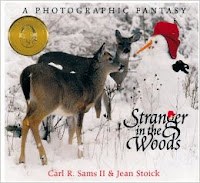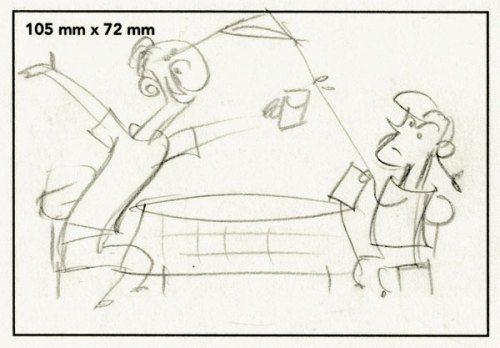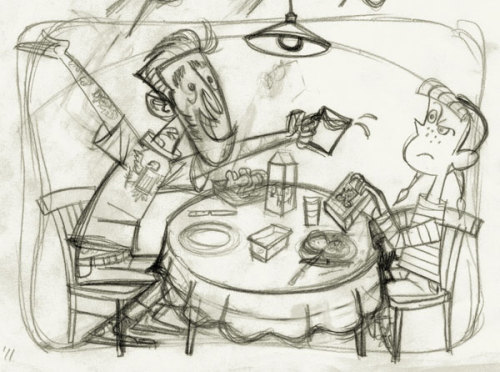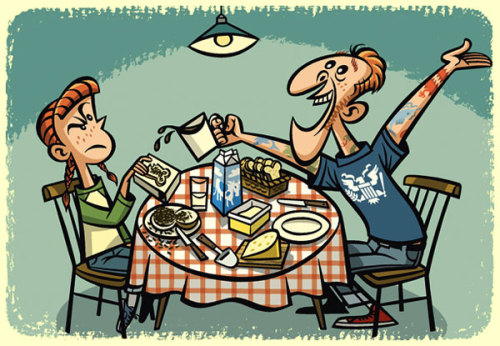new posts in all blogs
Viewing: Blog Posts Tagged with: How-To, Most Recent at Top [Help]
Results 1 - 25 of 141
How to use this Page
You are viewing the most recent posts tagged with the words: How-To in the JacketFlap blog reader. What is a tag? Think of a tag as a keyword or category label. Tags can both help you find posts on JacketFlap.com as well as provide an easy way for you to "remember" and classify posts for later recall. Try adding a tag yourself by clicking "Add a tag" below a post's header. Scroll down through the list of Recent Posts in the left column and click on a post title that sounds interesting. You can view all posts from a specific blog by clicking the Blog name in the right column, or you can click a 'More Posts from this Blog' link in any individual post.
By: Kassia Graham,
on 2/5/2016
Blog:
(
Login to Add to MyJacketFlap)
JacketFlap tags:
Spark Your Creativity,
Ready Set Draw,
Illustration,
Cats,
Tutorial,
Drawing,
How-To,
Kids Corner,
Kid Lit Crafts & Activities,
Add a tag

Author and illustrator Kelly Light shows Storymakers host Rocco Staino how to draw the fierce and fantastic cat from Louise Loves Art.
Video
Ready! Set! Draw! is the drawing tutorial show for anyone who aspires to draw like their favorite kid lit illustrators. In each episode a bestselling and/or award-winning artist draws a character from their book. Budding artists will enjoy creating their very own versions of familiar and new characters.

Did you, a child, or student draw their own cat using this video? Please share your images with us via Facebook or Twitter!

ABOUT LOUISE LOVES ART
Louise Loves Art – Meet Louise. Louise loves art more than anything. It’s her imagination on the outside. She is determined to create a masterpiece—her pièce de résistance! Louise also loves Art, her little brother. This is their story. Louise Loves Art is a celebration of the brilliant artist who resides in all of us.
– Meet Louise. Louise loves art more than anything. It’s her imagination on the outside. She is determined to create a masterpiece—her pièce de résistance! Louise also loves Art, her little brother. This is their story. Louise Loves Art is a celebration of the brilliant artist who resides in all of us.
ABOUT KELLY LIGHT
Via kellylight.com
Author and illustrator Kelly Light grew up on the New Jersey shore surrounded by giant pink dinosaurs, cotton candy colors, and Skee-Ball sounds. She was schooled on Saturday-morning cartoons and Sunday funny pages. She picked up a pencil, started drawing, and never stopped. Kelly has illustrated Elvis and the Underdogs and Elvis and the Underdogs: Secrets, Secret Service, and Room Service by Jenny Lee, and The Quirks series by Erin Soderberg.
Kelly is an International Ambassador of Creativity for The Chuck Jones Center for Creativity! The Center is a non-profit founded by Chuck Jones, the animator, artist and director of so many of the cartoons that we think of when we just think the word “cartoon”. In his lifetime, Chuck enjoyed talking to and encouraging younger artists. The center continues in this spirit to ignite creative thinking through free art classes for kids, creativity workshops, presentations and talks for kids and adults meant to inspire and enlighten. The center also has outreach programs to local schools who have lost their art funding and visits senior citizen centers to provide drawing and creativity exercises for greater mental and emotional health.
CONNECT WITH KELLY LIGHT
Website | Facebook | Goodreads | Instagram | Twitter
CONNECT WITH KidLit TV
Facebook Page | Facebook Group | Instagram | Newsletter | Pinterest | Twitter | YouTube
Ready! Set! Draw!
Executive Producer: Julie Gribble | Producer: Kassia Graham
Like it? Pin it!

The post Ready Set Draw | Kelly Light Draws Louise’s Cat appeared first on KidLit.TV.
If you're a teacher, and you live somewhere in the general vicinity of the northeast United States, you may be reading this from underneath a giant pile of blankets, cocoa in hand, enjoying at least one unexpected day off from school.
And if you're reading this, then you may be browsing for what to do when school is back in session, because your kiddos' focus will most likely still be on the gigantic piles of snow outside, and not on whatever you originally had planned.
 Second graders who are still marveling at the biggest snowstorm of their little lifetimes might have a good time writing about snow: Specifically, writing about how to build a snowman. So, here is a set of plans you might like to use, focusing on temporal words and how-to writing.
Second graders who are still marveling at the biggest snowstorm of their little lifetimes might have a good time writing about snow: Specifically, writing about how to build a snowman. So, here is a set of plans you might like to use, focusing on temporal words and how-to writing.
Some technical notes:
- I wrote these plans based on Sailing Through First Grade's How to Build a Snowman: Instructional Writing Mini-Pack. Clicking on the link in the previous sentence will take you to the Teachers Pay Teachers store page, where you can download the packet for free!
- These plans use only pages 1-5 and 17-18 of the packet, but feel free to adjust and tweak as you like.
- The plans are aligned with Pennsylvania Common Core standards, but you can easily adapt to the standards in use in your state.
- The plans are for second grade. However, they can be easily adapted for first and third grade - just adjust your core standards and tweak the plans accordingly to fit.
- The plans use the book below as an anchor text. (But if you don't have it and are pressed for time, any book about snowmen, or ideally, building a snowman, should do):
- Title: Stranger in the Woods: A Photographic Fantasy (Nature)
Author and photographer: Carl R. Sams II, Jean Stoick
Pages: 48
Reading Level: Ages 5 and up
Publisher and Date: Carl R. Sams Photography, November 1999
Edition: 1st
Language: English
Published In: United States
Price: $16.52
ISBN-10: 0967174805
ISBN-13: 978-0967174808
And finally, the plans:
- Clicking the link below will take you to the shared Google Doc, and you can download it from there.
Thank you for visiting, and happy reading and writing :)
Do you ever find yourself struggling to remove the white paper-textured background from around your images? I used to, until I learned this incredibly simple method using the “Channels” function in Photoshop. Here’s what you need to do, step by step.
1. Open up your image in Photoshop. Today I’ll be using this bicyclist illustration. Click the “Channels” icon (circled in red below.) You should see four rows: RGB, red, green, and blue. (Unless your image is CMYK, in which case you’ll have a channel for cyan, magenta, yellow and black instead.)

2. Depending on the dominant colors in your image, one channel will likely be darker than the others. I like to start with that one, but really any of them would probably work. In my case, the darkest channel is the the “Blue” channel. When I click on it, I see a grayscale version of my image. I’m going to copy this channel by dragging it down to the “copy” icon in the channels box. (See red arrow.)

3. Now there should be a fifth row in the channels box called “Blue copy.” You can re-name it if you like. While this channel is active, go to Image -> Adjustments -> Levels. Use the sliders to adjust the levels so that everything you want to be deleted (the background) is white, and the image is black. Anything that appears gray will be semi-transparent.

4. Once you’ve adjusted the levels on your channel, use the brush tool to clean it up, making sure the interior of the image is completely black if you don’t want the background showing through. (I didn’t want my cyclist’s mustache to be transparent!) When you’re done, click on the “RGB” composite channel so that your image appears as normal.

5. Exit the “Channels” view by clicking back on the “Layers” icon. Now it’s time to make the mask. To do this, go to Select ->Load Selection.
6. You will see a pop-up box something like this. Choose your “Blue Copy” channel, and click the checkbox for “invert.” (If you forget to do this, you can always just go to “Select -> Inverse”)

7. Now your background should be selected. To make it transparent, make a mask by clicking on the “Add a Mask” icon in your Layers box.

8. That’s all there is to it! It’s super easy. From here you can add any background you want, or just leave it transparent. Here I’ve added a blue background so that you can see how my mask turned out:


By: Kenneth Kit Lamug,
on 11/11/2015
Blog:
RabbleBoy
(
Login to Add to MyJacketFlap)
JacketFlap tags:
comic book trailers,
creative ideas and tips,
film trailers for books,
marketing for books,
social media marketing for books,
trailers for books,
self-publishing,
how-to,
Press,
book trailer,
book promotion,
Void,
instructables,
Add a tag
What is a book trailer and how can I get one?
Book trailers have become a popular part of modern book marketing campaigns. Just like movie or television show trailers, they are a great way of creating buzz and excitement for your soon to be best-selling book. There are many approaches to creating a successful trailer and I’ll be sharing with you some of my ideas.
But do book trailers really work?
Heck Yes, they do! Readers just don’t read… they watch, listen and immerse themselves in the audio-visual nature of popular culture.We live in a multimedia engulfed society, and neglecting visual-audio presentation tool is a big disadvantage to anyone working towards a career in writing and the arts. You are after all a story teller… and creating trailers is just one way of enhancing your audiences experience and emotional connection with the story. In addition, book trailers are great tools for sharing via social media due to its “stickyness” factor.
So let’s get on with it.
First thing is coming up with a plan for your trailer. What kind of trailer are you thinking of creating? What is your budget?
In this post we’ll talk about the different kinds of book trailers. I’ve broken it down into three easy to digest categories.
Let’s take a look.
Live action book trailer
These are the type of trailers that we typically see in movies. You’ll be working with real actors, directors, and video editors to create this slick production. This trailer works great if you want to create a realistic portrayal of your story. Just like a movie, you will have to cast the right actor to portray your characters and find a production team who will transform your vision from paper to screen. Bad acting and sloppy filming can negatively impact your presentation. So you might want to stay away from your nephew with a camera phone (Unless you’re going for that gritty camera phone look).
Think of your costs when producing a live action trailer… you’ll need to budget for actors, make up, equipment, costumes, video editing & production time and even location.
Try reaching out to your publishing company first and see if this type of production is in the budget. The alternative is to reach out to freelance artists or smaller firms who can create your trailer without breaking the bank. This usually means you have to slim down on your visual effects and only film the main scenes that will create the best impact with your audience.
Some writers like to go this route because they can also use the trailer as a tool for pitching their books to movie studios or producers. Not a bad idea, if you ask me.
Graphical trailer
These trailers are primarily composed of typographic and graphic animations with music and voice overs. Think of a slideshow on steroids. You can still create a fantastic trailer without having to blow out your marketing budget. I see a lot of books opting this direction and have done it with great success.
Going this route doesn’t necessarily mean that your trailer has to be a canned production. You can still personalize the trailer by using your own images, photography, and music. And if you’re working with a really good video editor, he can add motion that will make your trailer come to life as good as a live action trailer.
Keep in mind that audio plays a large part in creating the atmosphere of your trailer. Using sound and music properly can “mask” certain elements that you don’t show on screen. For example, in movies they will often use the sound of airplanes to create a airport scene… without showing the airplane itself. Think creatively!
Animated trailers
Animated trailers are a little in between live action and graphic trailers. It’s a mix of motion and movement with the use of animated characters… yet it doesn’t necessarily mean that it takes less time or money to produce.
It is also specialized in a way that it will probably be more effective for certain types of books (for example, children’s books or graphic novels and comics). Instead of actors, you now have to animate drawn characters and background scenes.
If you’re trying to create this type of trailer for a book that doesn’t utilize existing artwork (such as comics), then you will need an artist who will translate your stories and characters into a visual medium. Artists varying styles can also affect the atmosphere of your trailer, make sure to find someone who can portray the emotions you want.
Another factor to consider is how much control you want over the direction of your trailer. If your publishing house is producing the book trailer, they might want to hire a professional team who will create a script that works best to sell your book.
If you’re doing it guerrilla style (that means indie), then you have more control over your production. But at the same time you take on more of the burden and the responsibility for the end result — good or bad. Not everyone can be a director, yet with enough studying and dissection of existing trailers, you’ll slowly see the formula on how it’s done.
In the next blog post, I’ll talk a little bit more about the process of creating book trailers!
I love Steve Jenkins and Robin Page so I didn't really even have to open this new book (
How to Swallow A Pig: Step By Step Advice from the Animal Kingdom) by this pair before I decided we needed it for our classroom. I don't have one book by Jenkins that I don't find fascinating (and I think I have them all!). He is not only brilliant in the way that he shares information so that kids understand it but his organization and design for each book is amazing to me. I remember reading his book Down, Down, Down: A Story to the Bottom of the Sea and being intrigued by how he got the idea to focus and organize a book by going further and further below sea level to see what was there.
I am just as intrigued with this book. It's actually a How-To book which I find rather amusing. Each two-page spread teaches the reader how to do something that animals can do. The introduction to the book is great. Jenkins says, "So, you want to learn how to swallow a pig. You've come to the right place. Follow these step-by-step instructions, and soon you'll acquire the dining skills of a large snake..." He goes on to tell readers that there are other great skills to learn too.
Each 2 page spread focuses on a skill that readers can learn-For example, "Crack a Nut Like a Crow" and "Spin a Web Like a Spider" are two of my favorites. Jenkins takes a step by step look at how these things are accomplished and breaks them down into a set of how-to directions. Such a creative way to share this information.
I learned a great deal reading this book I think kids will enjoy the format (and as always, the art too!). It is a book that can be read from cover to cover. But it is also one that can be used in pieces--each two-page spread stands alone so each can be studied and discussed separately too. A good one for nonfiction book talks I think!

There’s nothing better to get a new creative project started than by making your own inspirational mood board. Creating your own mood board of idea’s and inspiration will help you to build a collection of concept base ideas to build a new art piece from whether a series of illustrations, photographs or painting. It’s not all that hard to do and once you get started creating a mood board can actually be a really enjoyable part of project building, although if you’ve not made one before here are afew easy tips to help you get started on making your own.
What do I put in a mood board?
A mood board can contain anything from doodles, words, photographs, textures , colour swatches, fabrics and much more based around a chosen theme for your project. So for example a theme maybe “ocean” to which you’d include images of its inhabitants , sea blue colour tones and meaningful words tied to the theme etc.
What do I need to make one ?
Its really down to personal preference but you can make a mood board easily in anything from the pages in your sketchbook, sticking them to a piece of artboard or a cork board with pins. There’s really no right or wrong way because your mood board is personal, there to give you idea’s and pull together concepts for your project that will help it grow.
Putting a mood board together.
- To begin putting your creative mood board together collect a series of images and inspirational materials linked to your chosen theme.
- On an a3 blank sketchbook page ( or any page size of your preference but bigger is less limiting to your mood board ideas) begin to add your mood board research to your page.
- Stick bits down with patterned washi tape or masking tape to make it more visual and allow you to change things around.
- Make it personal and have fun.
- Keep your creative mood board in sight throughout your project to stay visually inspired and consistant to your project theme to prevent getting creatively lost along the way.
Image by illustrator Katt Frank you can find out more about their work here .
Now Playing - Girl Is On My Mind by The Black Keys
For the last few years my wife and I have been selling our
handmade décor and geeky stuff on Etsy, an online marketplace. What is the
first thing people ask us when they find out that’s what we do for a living?
Not “What’s the shop?” or “Ooh, what do you sell?” No, it’s almost invariably
something like “I make things too… I
Now Playing - Creepin' Up The Back Stairs by The Fratellis
Life -
Over the past few weeks I've had an unusual number of people ask me about resources for publishing their own work and I figured rather than cutting and pasting the response to everyone, I'd make a blog I could send people to.
Obviously, this is far from complete and I'm not going into extreme depth on most
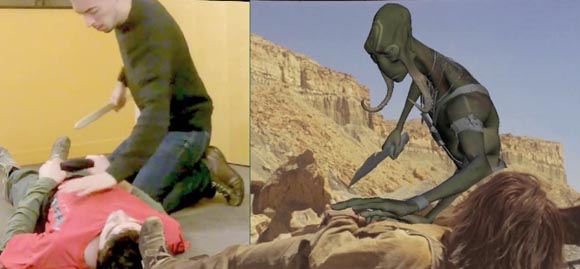
I still haven’t seen Andrew Stanton’s John Carter, but that didn’t lessen (and perhaps enhanced) my enjoyment of this nifty character animation reel put together by Emanuele Pavarotti, who worked on the film at Double Negative. Pavarotti has organized the reel nicely to give a sense of how his scenes progressed from video reference to blocking to final animation, and finally, FX/cloth/compositing passes. He even drops in comments throughout the reel to explain how certain shots evolved. Emanuele has recently been working at Blue Sky Studios on Epic and the forthcoming Rio 2.
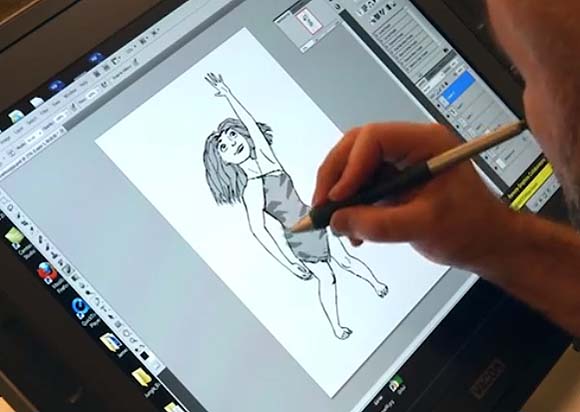
I’m sure DreamWorks had the purest of intentions when they enlisted their superstar animator James Baxter to teach children how to draw characters like Eep and Guy from The Croods. But we all know how these tutorials will be put to use by the Internet. (All links NSFW in the last sentence.)
They’ve even made a “Gran” tutorial for the gerontophiles:
And please, I beg of you, if you do anything smutty with this character, don’t show me:

By: Jerry Beck,
on 3/21/2013
Blog:
Cartoon Brew
(
Login to Add to MyJacketFlap)
JacketFlap tags:
Maya,
How-To,
CGI,
Educational,
Nina Paley,
David OReilly,
Rigging,
Blender,
Sita Sings the Blues,
The External World,
Add a tag
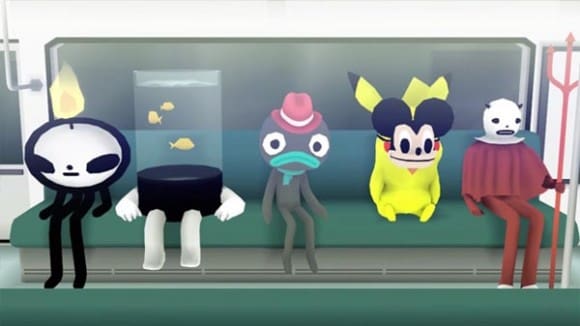
In what may be a first for a major award-winning animated short, filmmaker David OReilly has released all of the character rigs from his short The External World. OReilly follows in the footsteps of filmmakers like Blender Open Projects and Nina Paley who have also released animation production assets for the educational benefit of the community. Says OReilly:
You can use and modify them in any way you like as long as it’s for a non-commercial purpose. Showreels, short films, indie games, all that stuff is cool – just give credit. If it’s web based – include a link to my site. I’m releasing these without a how-to (or support of any kind) but it should be very straight forward. They are extremely low-weight and easy to animate with, all are compatible with versions of Maya after 2010.

Cartoonist and storyboard artist Sherm Cohen has updated his fantastic How to Draw Cartoons Facebook page with scans of the rare 1939 book Popeye’s How to Draw Cartoons. The book has some solid common sense advice, including this bit which I liked: “Copy other characters you enjoy following in your newspaper. Don’t worry if they don’t look exactly like them. The important thing is—are you remembering to exaggerate your impression of the character you have in mind?” See the entire book HERE.
Below is a biography of Joe Musial, the artist who drew this how-to book. This bio appears in Fred Grandinetti’s Popeye: An Illustrated Cultural History :
:

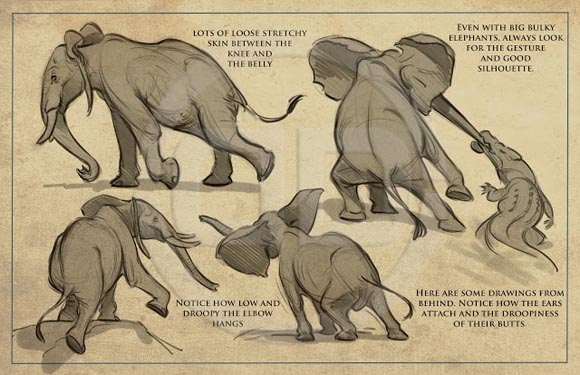
Digital Domain’s first animated feature The Legend of Tembo fulfilled its prophetic title. Thanks to the misdeeds of the company’s management, the film can never exist and has, in fact, turned into a legend.
The film’s co-director Aaron Blaise is keeping Tembo‘s memory alive on his newish blog by posting materials from the film’s production. So far, he has uploaded concept and development paintings, pencil tests, and most impressively, a massively detailed how-to guide for drawing elephants. If there’s one thing that can be safely concluded from all this material, it’s that the man knows how to draw a mother-humpin’ elephant.
Glen Keane presented an animation demo at CalArts last weekend. Part of his talk, in which he animates a dance, was captured on video and posted online. The people who attended the lecture in person had to pay $40,000 a year for that privilege. We give it to you for free on Cartoon Brew.
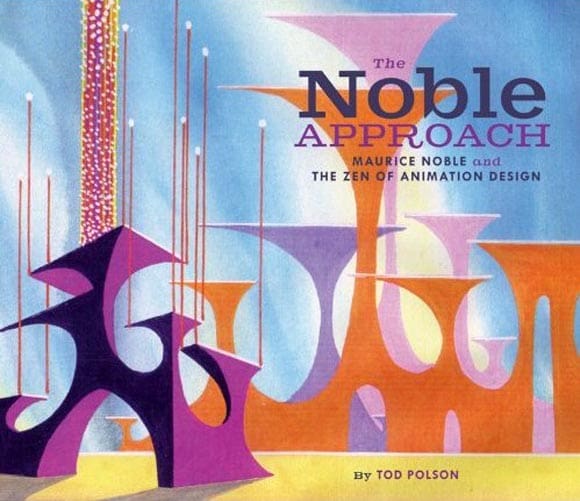
Ready…set…pre-order Tod Polson’s book about legendary Warner Bros. layout man Maurice Noble. The book is called The Noble Approach: Maurice Noble and the Zen of Animation Design . Publisher is Chronicle Books; street date is May 31, 2013. Retails for $40, Amazon price is $26.40.
. Publisher is Chronicle Books; street date is May 31, 2013. Retails for $40, Amazon price is $26.40.
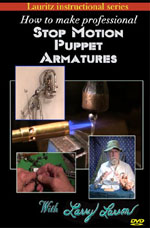 I’ve been meaning to give this unique DVD a plug for sometime. If you’re a filmmaker looking to make perfect ball and socket armatures for stop motion animation, look no further. Larry Larson is an instructor at The College for Creative Studies in Detroit, teaching armature building, maquette scupture and stop motion animation. He’s worked for over 40 years in special effects animation in both feature films and television spots, on projects ranging from Sam Raimi’s Evil Dead ll, to low budget flicks like Flesh Gordon ll, as well as numerous local commercials (like this), and providing props and puppets for many other shows. Larson taught Ellen Coons how to build the armatures that were used in her CB Student Fest film Money Bunny Blues which we featured here a few days ago. Larson’s new step-by-step armature making video is a labor or of love – and an important reference for all stop motion filmmakers and aspiring puppet builders.
I’ve been meaning to give this unique DVD a plug for sometime. If you’re a filmmaker looking to make perfect ball and socket armatures for stop motion animation, look no further. Larry Larson is an instructor at The College for Creative Studies in Detroit, teaching armature building, maquette scupture and stop motion animation. He’s worked for over 40 years in special effects animation in both feature films and television spots, on projects ranging from Sam Raimi’s Evil Dead ll, to low budget flicks like Flesh Gordon ll, as well as numerous local commercials (like this), and providing props and puppets for many other shows. Larson taught Ellen Coons how to build the armatures that were used in her CB Student Fest film Money Bunny Blues which we featured here a few days ago. Larson’s new step-by-step armature making video is a labor or of love – and an important reference for all stop motion filmmakers and aspiring puppet builders.
So here’s a shout-out to How to Make Professional Stop Motion Puppet Armatures by Larry Larson. A valuable tool in your filmmaking arsenal.
Cartoon Brew |
Permalink |
No comment |
Post tags: Larry Larson
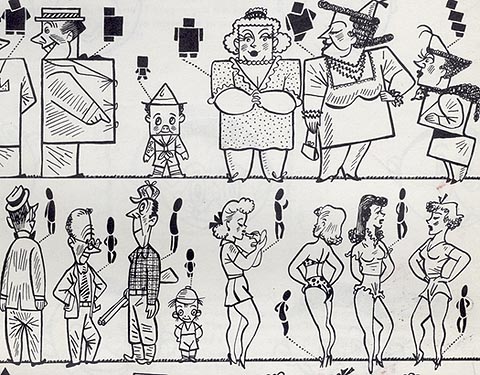
Frank Tashlin’s extremely rare 1952 cartooning booklet How to Draw Cartoons has been posted online in its entirety. In the book, Tashlin promotes his SCOT Art technique, which simplifies every cartoon character into squares (S), circles (C), ovals (O) and triangles (T).
Tashlin’s idiosyncratic style is geared more toward print cartoonists than animators, owing to Tashlin’s beginnings as a newspaper cartoonist. Even though his old-school cartooning style was already on its way out when the book was published in 1952, somehow the style looks artful in his confident hands. Throughout the book, Tashlin uses examples from his own illustrated books, including The World That Isn’t, which still holds up as a masterpiece of graphic art commentary.
Not to take this too far off-topic, but if you’re interested in learning more about Tashlin, I’d also recommend this Michael Barrier interview, which was conducted just one year before Tashlin passed away.
Tashlin has never been properly given his due as an animation director, mostly because his career as a live-action director eclipsed his earlier work. But he was easily among the most forward-thinking, singular and influential animation directors of Hollywood’s Golden Age. Below is a fine example of his innovative directorial style—the 1943 Warner Bros. short Puss n’ Booty.
Cartoon Brew |
Permalink |
No comment |
Post tags: Frank Tashlin, Puss n' Booty, Warner Bros.
Chuck Jones shows how to draw Bugs Bunny


By: Jerry Beck,
on 4/24/2012
Blog:
Cartoon Brew
(
Login to Add to MyJacketFlap)
JacketFlap tags:
Disney,
How-To,
Animators,
Classic,
Internet/Blogs,
Pitching,
Art Babbitt,
Brandon James Scott,
Justin Time,
Add a tag

Jake Friedman emailed yesterday to tell me about BabbittBlog.com, a site dedicated to all things Art Babbitt. Jake has been researching a biography of the legendary animator for the last few years, and if the blog is any indication, there’s still a lot left to learn about Babbitt.
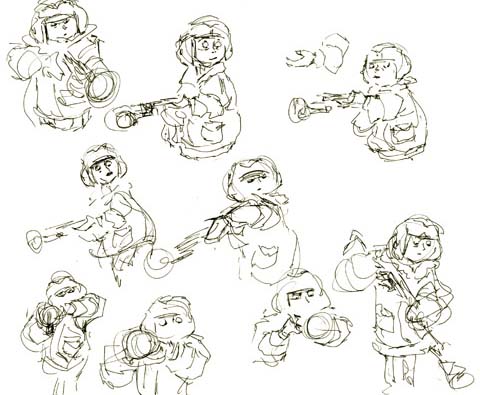
There’s no shortage of animation tips posted online nowadays, but this mass of how-to advice isn’t particularly well organized. Thankfully, Jonah Sidhom has created the Animation Article Database, an invaluable list of links to animation tips from industry pros, organized alphabetically.
Canada’s only animator with three first names, Brandon James Scott, has an informative series of blog posts about creating Justin Time, a preschool animated series that is now in production on its second season. He takes the reader through the entire process from pitch to development to bible, and finally, production.
Cartoon Brew |
Permalink |
No comment |
Post tags: Art Babbitt, Brandon James Scott, Justin Time, Pitching
Here’s Quentin Blake demonstrating, step by step, how he makes the illustrations for his books.
It’s from this great page on his website, How I Draw, in which he describes the process a little more:
In the attempt to combine planning with an air of spontaneity I’ve employed various techniques of which the one I have found most successful, and have used for the last thirty years, makes use of a light box.
…
What happens next is not tracing; in fact it’s important that I can’t see the rough drawing underneath too clearly, because when I draw I try to draw as if for the first time.

Well, my day is made. I could watch Jim Woodring draw and listen to him talk all day long.

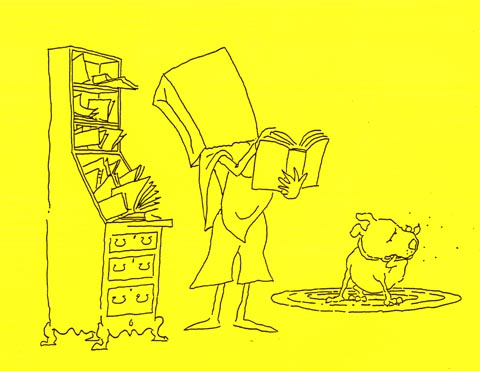
As part of his newish on-line column at Print magazine, J. J. Sedelmaier has written an excellent account about producing a couple of animated commercials with New Yorker cartoonist George Booth. The spots, produced in 1993, came fairly early in Sedelmaier’s animation career—though not before he had animated the first season of Beavis and Butthead—and he writes eloquently about what these pieces meant to his development as an artist:
Working with [George Booth] opened vistas for me and redefined what collaboration should be all about. . . .The advertising agency (Foote Cone & Belding/SF), the designer (that would be George), and the sound designer (the late Tom Pomposello), were a magical combination that one rarely gets to experience when producing commercials. It was this project that was also a right of passage of sorts for me because I was extended a level of respect and a peer level working relationship that I hadn’t really seen yet.
The entire article is packed with pre-production artwork (at incredibly high resolutions, no less) and lots of fun behind-the-scenes stories. Well worth your time.
Cartoon Brew: Leading the Animation Conversation |
Permalink |
No comment |
Post tags: George Booth, J.J. Sedelmaier
Paris-trained mime Lorin Eric Salm answers the age-old question, Are mimes relevant in animation? That’s only second in importance to the question: if a mime falls in a forest and no one is around to hear it, does anyone care?
Cartoon Brew: Leading the Animation Conversation |
Permalink |
One comment |
Post tags: Lorin Eric Salm, Mime
Last week, we talked about evaluating your library’s policies and determining whether they were appropriate and reasonable for teens. If you concluded that some changes are needed, it’s time to think about how to make those changes.
- You will want to proceed carefully and thoughtfully. Policies are not written in a vacuum, and there will have been reasons behind every policy or procedure. If possible, find out what those reasons are. Find out the background of the policies—is this a new policy, or a time-honored one?
- Learn your library’s process for changing policies and procedures. Who can propose a change and who can approve a change? If your change involves the strategic plan or the library’s core values, it may require approval by the Board of Trustees or City Council. If it is a simple procedure change, it may be able to be approved by the library’s administration.
- Whoever the decision-makers are, give them sufficient and appropriate background information. Some examples:
- Why the change should be made: how will this change affect the library’s service to teens and the relationship to the community?
- What impact the change will have on staffing: for example, show that after-school supervision will require fewer staff members if they don’t have to spend time policing the “no-furniture-moving” rule.
- What impact the change will have on procedures: for example, school id cards will be added to the list of acceptable identification for getting a library card
- What impact the change will have on the budget: for example, will there be costs associated with changing signs or informational handouts?
- When the change will take effect: will it require a roll-out or pilot period, or can a date be set to make the change? Would it make sense to change the policy at the beginning of a fiscal year, calendar year, or school year?
- Get teen input on the proposed changes, and present that with your proposal. If you can show you have teen buy-in, it may go a long way toward making your point, especially if what you are advocating appears to be more lenient than what currently exists.
- Get your supervisor’s buy-in before you take it any higher. Your supervisor can help advocate at the higher levels, but her or she needs to understand fully the proposal.
Has anyone had success with changing policies that didn’t include teens or didn’t treat them equitably?




View Next 25 Posts










